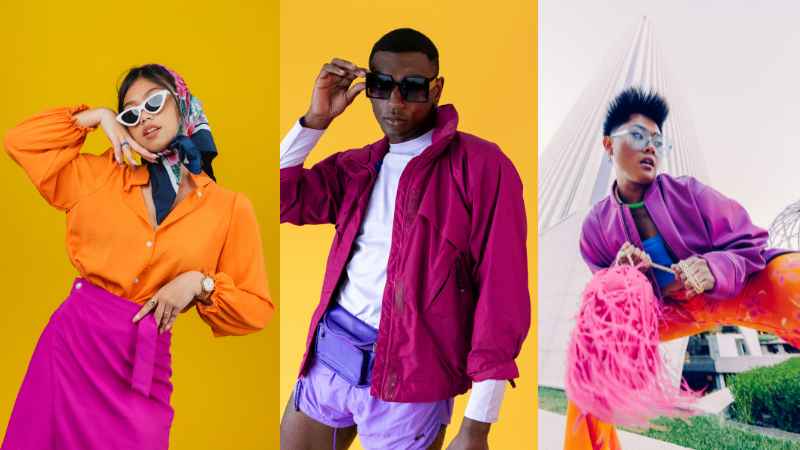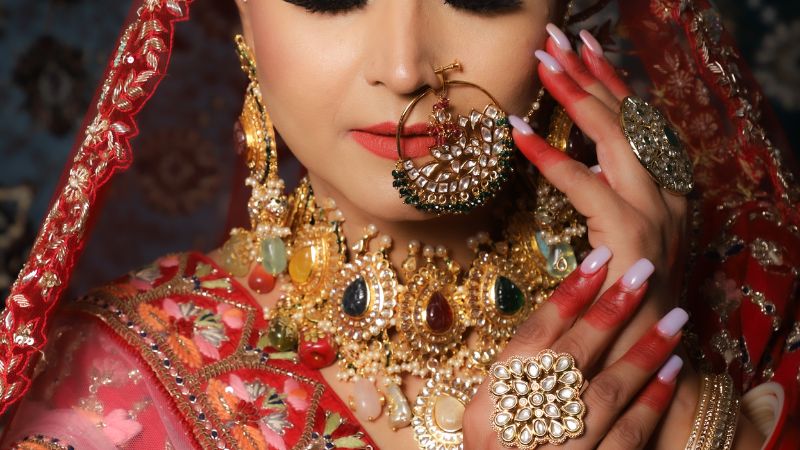Culture encompasses a particular group of people’s beliefs, customs, art, and social practices. It is a multifaceted concept that shapes individuals’ behaviors, values, and ways of life. Culture plays a pivotal role in fashion by influencing design aesthetics, garment choices, and personal styles.
Fashion is a dynamic and ever-evolving form of self-expression through clothing, accessories, and personal adornment. It reflects a society’s prevailing styles and tastes, often influenced by various factors, including cultural, social, economic, and technological changes.
The relationship between culture and fashion is intricate and reciprocal. Culture serves as a wellspring of inspiration for designers, impacting the creation of styles that resonate with the values and aesthetics of a particular community. Simultaneously, fashion acts as a visual language, contributing to the representation and dissemination of cultural identities.

Evolution of Fashion in Different Cultures
Examining the historical evolution of fashion across various cultures reveals how geographical, climatic, and societal factors have shaped clothing styles. Traditional garments often reflect a community’s functional needs while embodying cultural symbolism and craftsmanship.
Influence of Cultural Movements on Fashion Trends
Cultural movements such as the Renaissance, Romanticism, and countercultural revolutions have profoundly influenced fashion trends. These movements sparked shifts in artistic expression, challenging established norms and inspiring new creative directions.
Examples of Iconic Cultural Fashion Moments
Iconic cultural fashion moments serve as snapshots of history, capturing the fusion of fashion and artistic expression. Instances like the emergence of haute couture in Paris, the vibrant styles of the Harlem Renaissance, or the global impact of Japanese street fashion underscore the power of culture to shape and redefine the fashion landscape.
Cultural Symbols and Meanings in Fashion
Use of Traditional Symbols in Contemporary Fashion
The incorporation of traditional symbols in contemporary fashion serves as a bridge between the past and the present. Designers often draw inspiration from cultural heritage, infusing garments with historical, spiritual, or regional symbols. This practice celebrates cultural diversity and contributes to preserving traditional craftsmanship.
Cultural Appropriation and Its Impact on Fashion
Cultural appropriation, the adoption of elements from one culture by another, has sparked debates within the fashion industry. When done insensitively, it can perpetuate stereotypes and disrespect cultural practices. It is crucial for designers and consumers alike to be aware of the potential harm caused by cultural appropriation and to strive for respectful engagement with diverse cultural influences.
Cultural Identity and Self-Expression Through Clothing
Clothing serves as a powerful tool for individuals to express their cultural identity. Whether through traditional attire, fusion styles, or personal reinterpretations, people use clothing to convey a sense of belonging and pride in their cultural heritage. This aspect of self-expression contributes to the rich tapestry of global fashion, showcasing the diversity of identities within the fashion landscape.
Globalization and Cultural Fusion
Globalization has transformed the fashion industry, breaking geographical barriers and creating a melting pot of styles. The increased interconnectedness of cultures has led to the rapid dissemination of fashion trends worldwide. As a result, fashion has become a global language, reflecting a shared visual vocabulary that transcends borders.
Cross-Cultural Influences in Modern Fashion
Modern fashion thrives on cross-cultural influences, with designers drawing inspiration from diverse sources. The exchange of ideas and styles between cultures has led to innovative and eclectic fashion movements. This cross-pollination has enriched the industry, fostering creativity and pushing the boundaries of traditional fashion norms.
Hybridization of Styles and the Emergence of Global Fashion Trends
Hybridizing styles is a hallmark of contemporary fashion, as designers merge elements from different cultures to create unique and hybrid looks. This blending of diverse influences has led to global fashion trends that resonate across continents. From streetwear to high fashion, the synthesis of cultural elements continues to shape the ever-evolving landscape of international fashion.
Cultural Diversity in the Fashion Industry
In recent years, there has been a growing recognition of the need for increased representation of diverse cultures in fashion media. This includes featuring models, designers, and stylists from various ethnic backgrounds. Efforts to showcase the richness of global cultures promote inclusivity and challenge traditional beauty standards, fostering a more authentic and diverse portrayal of fashion.
More Post : Most 15 Influential Fashion Icons Throughout History

Promotion of Inclusivity and Cultural Sensitivity in the Fashion Industry
The fashion industry increasingly acknowledges the importance of promoting inclusivity and cultural sensitivity. Brands are consciously trying to avoid cultural appropriation, engaging in collaborations with diverse talents, and ensuring that their marketing campaigns authentically celebrate cultural diversity. This shift contributes to a more socially responsible and culturally aware fashion landscape.
Challenges and Opportunities in Embracing Cultural Diversity
While progress is being made, the fashion industry still faces challenges in fully embracing cultural diversity. These challenges include navigating potential cultural misunderstandings, addressing stereotypes, and ensuring that diverse voices are not tokenized. However, the opportunities for growth and innovation that come with embracing cultural diversity far outweigh these challenges, allowing the industry to redefine its narrative and appeal to a broader, global audience.
Role of Clothing in Cultural Ceremonies and Rituals
Clothing holds profound significance in cultural ceremonies and rituals, acting as a visual language communicating traditions and values. From weddings to religious ceremonies, the attire worn during these events often reflects the symbolism and heritage of a particular culture. Designers who draw inspiration from these ceremonial garments contribute to preserving cultural narratives in the ever-evolving world of fashion.
Traditional Attire and Its Significance
Traditional attire is a testament to a community’s historical roots and identity. The significance of kimonos, saris, or kente cloth extends beyond aesthetics, representing a connection to ancestral practices and cultural heritage. The fashion industry’s recognition and incorporation of traditional attire contribute to the appreciation and global understanding of diverse cultures.
Cultural Preservation Through Fashion
Fashion serves as a dynamic vehicle for cultural preservation. As designers reinterpret and modernize traditional elements, they breathe new life into cultural practices, ensuring they remain relevant in contemporary society. Through this interplay between tradition and innovation, fashion becomes a medium for celebrating and preserving diverse cultures, fostering a sense of pride and continuity.
Economic Importance of Cultural Fashion Industries
Cultural fashion industries contribute significantly to the global economy. From traditional craftsmanship to contemporary fashion hubs, these industries generate revenue, create jobs, and stimulate economic growth. The production and export of culturally influenced fashion items often become critical drivers of economic development, fostering entrepreneurship and supporting local economies.
Social Impact of Fashion Choices on Cultural Perceptions
Fashion choices have a profound impact on cultural perceptions. The clothing individuals choose to wear can convey messages about their identity, beliefs, and affiliations. Moreover, representing diverse cultures in fashion helps challenge stereotypes and fosters a more inclusive understanding of different communities. Conversely, insensitivity to fashion choices can perpetuate harmful stereotypes and contribute to cultural misunderstandings.
Influence of Cultural Values on Consumer Behavior in the Fashion Market
Cultural values are pivotal in shaping consumer behavior within the fashion market. Consumers often make purchasing decisions based on their cultural background, preferences, and values. Brands that align with these cultural values and engage in culturally sensitive marketing are more likely to resonate with their target audience, leading to brand loyalty and successful market penetration.
Exploration of Specific Cultures and Their Impact on Fashion
Examining the influence of specific cultures on fashion provides valuable insights into the diversity and richness of global fashion. Case studies may delve into the distinct aesthetics of cultures, such as Japanese street fashion, the vibrant patterns of African textiles, or the minimalistic elegance of Scandinavian design. By exploring these cases, one can better understand how culture shapes the fashion landscape.
Analysis of Successful Cross-Cultural Collaborations in the Fashion Industry
Successful cross-cultural collaborations demonstrate the power of diversity in fostering innovation and expanding creative horizons. Case studies can highlight instances where designers from different cultural backgrounds come together to create collections that blend their unique perspectives. These collaborations enrich the fashion industry and contribute to a more interconnected and culturally diverse global marketplace.
Examination of Controversies Related to Cultural Influences in Fashion
Controversies related to cultural influences in the fashion industry raise essential questions about appropriation, representation, and ethics. Case studies can explore instances where cultural elements were misappropriated, leading to public backlash. These examinations provide learning opportunities and contribute to the ongoing dialogue about the responsible and respectful integration of cultural influences in fashion.
Anticipated Changes in the Relationship Between Culture and Fashion
The future relationship between culture and fashion will likely see continued evolution. Anticipated changes include:
- Deeper technology integration.
- Further breaking down geographical barriers.
- A heightened awareness of cultural sensitivity.
As fashion becomes more globalized, there may be a shift towards a more inclusive representation of diverse cultures, challenging traditional beauty standards and fostering a more dynamic fashion landscape.
Technology’s Role in Shaping Cultural Fashion Trends
Technology is poised to play a pivotal role in shaping cultural fashion trends. Augmented reality (AR), virtual reality (VR), and artificial intelligence (AI) may be used to enhance the shopping experience, allowing consumers to virtually try on culturally inspired garments or explore the stories behind specific designs. Additionally, technology can facilitate cross-cultural collaborations and enable designers to draw inspiration from a broader range of cultural influences.
Importance of Cultural Sensitivity and Ethical Considerations in the Future of Fashion
As the fashion industry continues to evolve, there is a growing emphasis on cultural sensitivity and ethical considerations. Brands will likely face increasing scrutiny regarding their sourcing practices, representation of diverse cultures, and commitment to fair labor standards. The future of fashion is expected to prioritize sustainability, inclusivity, and ethical practices, encouraging a more responsible and conscientious approach to cultural influences in the industry.
Conclusion
Throughout this exploration, it becomes evident that the relationship between culture and fashion is dynamic and multifaceted. From the historical evolution of fashion to the economic and social implications, cultural diversity, and future trends, each aspect contributes to the intricate tapestry that is the world of fashion.
In conclusion, the dynamic and evolving relationship between culture and fashion is a testament to the adaptability and creativity inherent in both realms. As we move forward, the fashion industry’s ability to embrace cultural diversity, navigate challenges, and adopt ethical practices will be vital in shaping a more inclusive, sustainable, and culturally sensitive future for fashion. The journey of cultural influences in fashion continues to unfold, promising ongoing innovation and enrichment in the ever-changing landscape of style and self-expression.




